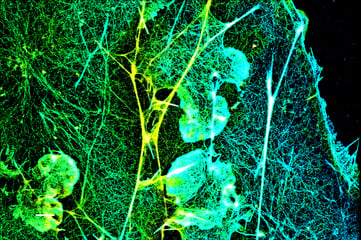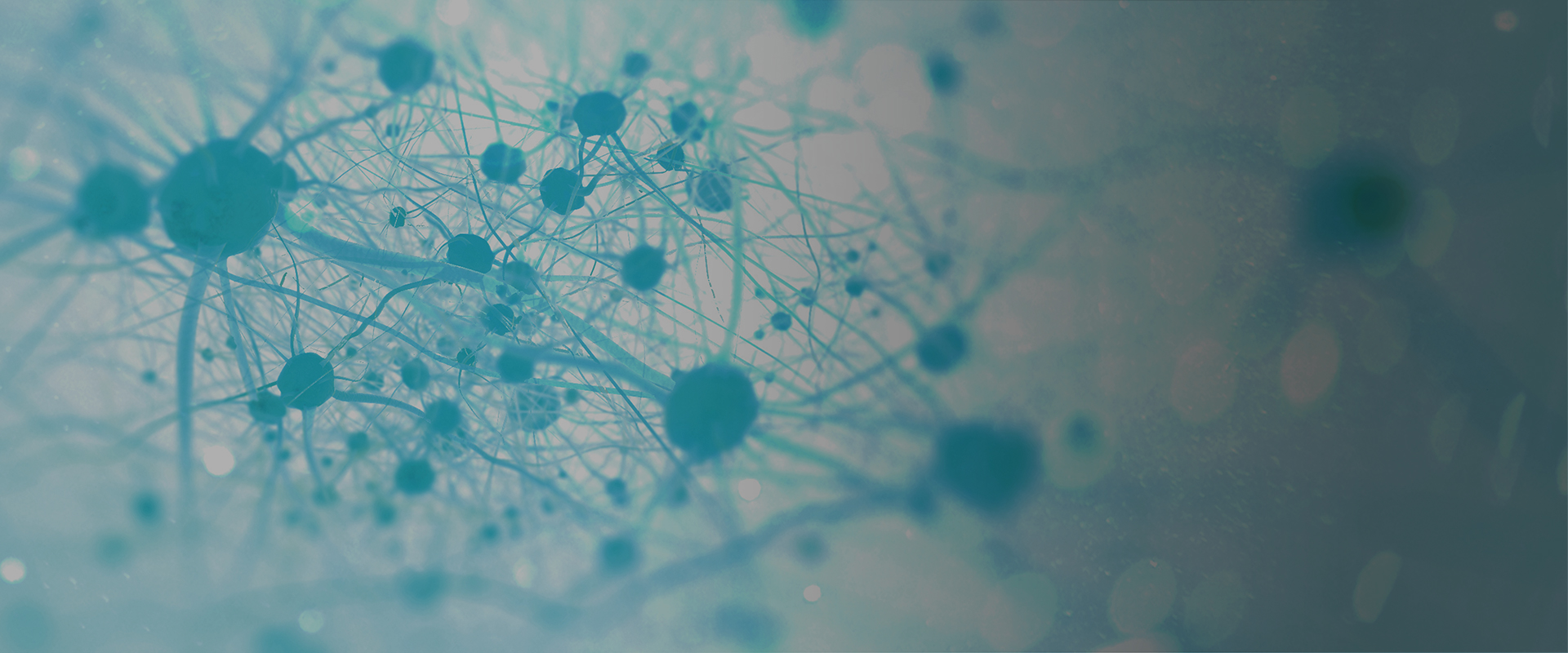New study describes novel chemical modifications to fluorescent dyes for improved super-resolution imaging by STORM
January 27, 2022
The UC Berkeley study, published in collaboration with Biotium, offers a breakthrough chemical strategy for designing new fluorescent dyes optimized for STORM super-resolution microscopy
 Biotium, a leading life science reagent supplier and producer of innovative dyes, has collaborated with Professor Ke Xu at University of California, Berkeley to generate a strategy for improving the photoswitching behavior of rhodamine dyes for optimal (d)STORM [(direct) stochastic optical reconstruction microscopy] performance. The two rhodamine-based and green-excitable CF® Dyes produced, CF®583R and CF®597R, display significant sensitization toward photoswitching and offer comparable performance to the commonly used red-excited Alexa Fluor® 647 dye, making high-quality two-color three-dimensional (3D) imaging possible even for difficult structures.
Biotium, a leading life science reagent supplier and producer of innovative dyes, has collaborated with Professor Ke Xu at University of California, Berkeley to generate a strategy for improving the photoswitching behavior of rhodamine dyes for optimal (d)STORM [(direct) stochastic optical reconstruction microscopy] performance. The two rhodamine-based and green-excitable CF® Dyes produced, CF®583R and CF®597R, display significant sensitization toward photoswitching and offer comparable performance to the commonly used red-excited Alexa Fluor® 647 dye, making high-quality two-color three-dimensional (3D) imaging possible even for difficult structures.
Identifying and developing effective photoswitchable dyes is central to (d)STORM. Though there are several dyes (e.g., Alexa Fluor® 647, CF®660C, and CF®680) excited by red lasers that perform suitably for (d)STORM, generating comparable dyes in other color channels remains a challenge. In a recent Angewandte Chemie publication, scientists at Biotium designed a new chemical strategy for generating these elusive dyes. The breakthrough was achieved by replacing the benzene ring in the cores of rhodamine-based dyes with the permanently charged 1,3-disubstituted imidazolium to create CF®583R and CF®597R. The positively charged 1,3-disubstituted imidazolium sensitizes the dye for the photoswitching process under (d)STORM conditions by facilitating electron capture in a thiol-containing reductive buffer and stabilization by a resonance structure. Under green excitation, CF®583R and CF®597R exhibited outstanding (d)STORM performance with fast on-off switching, long-lasting blinking, and bright single-molecule emission. The authors found that other green-excited (d)STORM dyes (i.e., Alexa Fluor® 532, Cy3B, Atto™ 565, and Alexa Fluor® 568) exhibited very limited photoswitching under the same excitation power, with the latter two yielding no discernible spectral changes. In this recent Angewandte Chemie publication, the authors, Wang et al., demonstrated the use of CF®583R and CF®597R in groundbreaking high-quality two-color 3D-(d)STORM and excellent quality imaging of the challenging structure of actin cytoskeletons.
“Working closely with Biotium chemists and communicating the ideal chemical properties needed for optimal STORM dyes, our collaboration was able to yield a framework for developing more fluorescent colors that expand the color palette for multicolor STORM imaging” says Ke Xu PhD, Associate Professor of Chemistry at UC Berkeley.
"While there have been recent significant advancements in STORM imaging and applications, the work toward improving the chemical probes for green-excited dyes for the 532-561 nm lasers has been lacking” says Wai-Yee Leung PhD, Vice President of Research and Development at Biotium. “We are proud to offer novel reagents for multiplex imaging to support this exciting field.”
Biotium continues to help move the field in new and exciting directions by generalizing the concept and approach outlined in this publication to other rhodamines and dye structures to create an extended palette for (d)STORM. Existing rhodamine-based dyes for STORM, including CF®583R and CF®597R, can be procured through Biotium as single-labeled secondary antibodies, amine-reactive succinimidyl esters, or Mix-n-Stain™ STORM CF® Dye Antibody Labeling Kits. In addition, CF®583R is also available as phalloidin and Annexin V conjugates.
Learn more about Biotium’s CF® Dyes and other probes validated for super-resolution microscopy. For licensing inquiries, please contact btinfo@biotium.com.
About Biotium
Biotium is a leading life science reagent manufacturer and supplier devoted to providing high-quality and innovative fluorescent tools that fuel scientific discovery. Our collaborative team of experienced chemists and biologists, who are at the forefront of fluorescent dye design, apply chemistry-based principles toward producing solutions for unmet challenges in life science and medical research. Since its founding in 2001, Biotium has developed over 30 patented technologies that have been licensed out to leading life science technology companies worldwide. For more information, please visit www.biotium.com.





